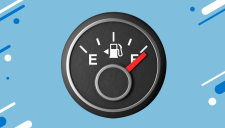3 Ways to protect your home during loadshedding

Published on 27th September, 2022 at 03:59 pm
Loadshedding is a sad reality that we as South Africans face. Being prepared for it can have a long-term cost-saving benefit, especially if you use these tips.
Reading time: 3 minutes
In this article you’ll learn:
- Ways to protect your home during loadshedding.
- How to mitigate risks to your valuables caused by loadshedding.
- How to calculate the value of your household contents.
Since the start of the year, the popular loadshedding app EskomSePush calculates that South Africa has experienced about 1 345 hours (56 days)* of national power outages – with even more expected in the near future. The frequency of rotational power cuts not only puts a major strain on day-to-day lives but has caused a surge in damage to electronic items.
“South Africans need to mitigate the risk of damages caused by loadshedding by being prepared prior to [the] power going off,” says Santam head of personal lines underwriting Attie Blaauw. “The reality is that loadshedding has an immense impact on consumers and businesses alike, who must cope with damage to appliances brought on by power surges and dips, [and the increase of] crime-related risks as a result of faulty security systems.”
Blaauw suggests implementing the below to mitigate risks that may be caused by power cuts.
Ensure your alarm system is in tip-top shape
Blaauw suggests ensuring that your alarm system is in working condition and that the back-up battery is fully functional to provide power to the system in the event of loadshedding. “When you check your back-up battery, look at everything,” says Fidelity ADT’s head of communications and marketing Charnel Hattingh.
Want to add value to your home before selling? Here’s how to increase the value of your home, without breaking the bank.
Reduce damage to electrical appliances
“Electric surges are one of the biggest causes of damage to equipment during a power outage,” says Blaauw. “Installing a surge protection device can help minimise […] damage [to your electronic devices].” So, equipping your home with a surge-protection device fitted directly to your electrical distribution board or at the power outlet to the electronic device could lower the risk of damage to your appliances – and ultimately extend their lifespan.
Do you know exactly what you’re covered for in terms of household content? Find out here!
Protect important data on digital devices
Ahead of a scheduled power outage, ensure electronics like your cell phone, laptop, and tablet devices are fully charged.
“It’s also a good idea to have an emergency phone charger (like a power bank) close by, as this will come in handy during extended power outages,” says Blaauw. Alternatively, consider investing in an UPS (Uninterruptible Power Supply). It supplies power for short periods of time during a power outage, and allows you to save active data and safely shut down equipment without harm to devices or loss of data when an unexpected power outage occurs.
Tip:
An effective way to prevent the loss of data is to back up all of your files and documents on an external hard drive. Alternatively, invest in cloud storage.
*Correct at time of writing
It’s easy to underestimate the value of your home’s contents. Use our home contents inventory calculator to determine the correct value of your home’s contents. Plus, if you’re a Reality Health, Plus or Core member, you’ll earn 1 000 tier points!
Want to learn more?
We send out regular emails packed with useful advice, ideas and tips on everything from saving and investing to budgeting and tax. If you're a Sanlam Reality member and not receiving these emails, update your contact details now.
Update Now







